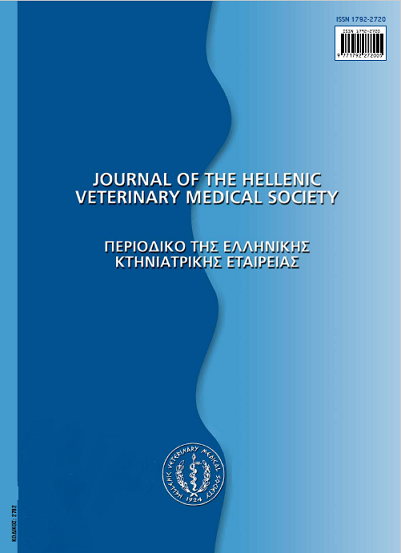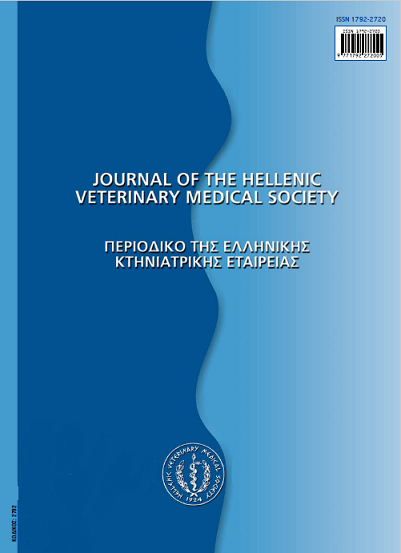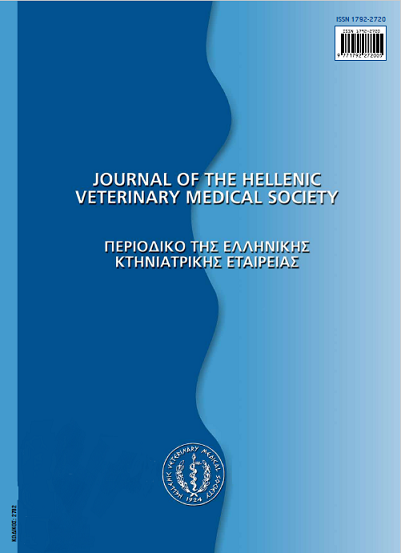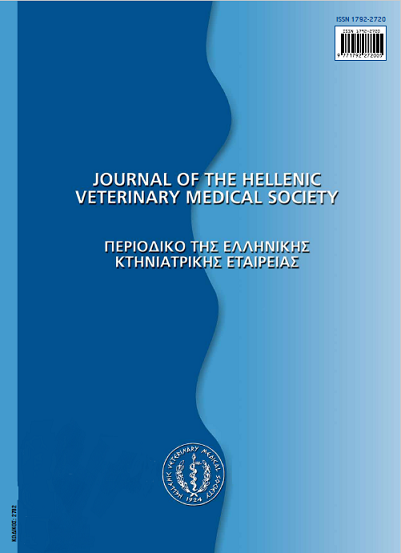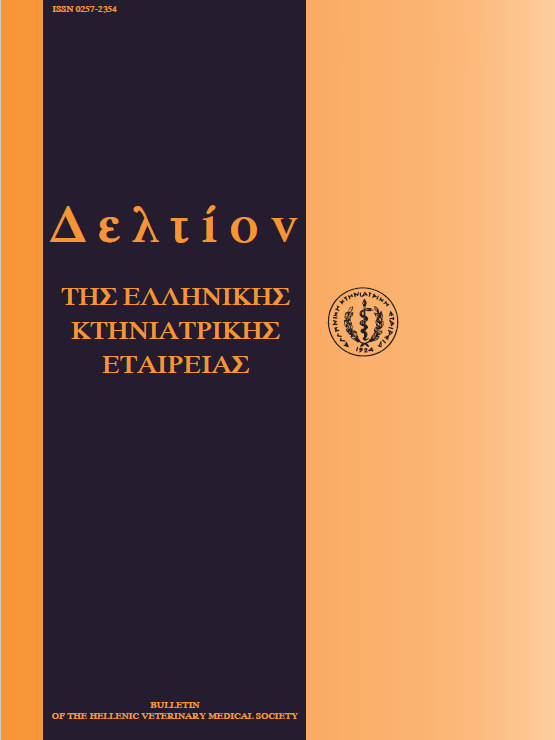Υποπλασία της πυλαίας φλέβας και πυλαία υπέρταση σε νεαρό σκύλο

Περίληψη
Σκύλος φυλής Καυκάσου, ηλικίας 5 μηνών, προσκομίστηκε με ιστορικό διόγκωσης της κοιλίας διάρκειας 20 ημερών και ανορεξίας, κατάπτωσης και εμέτων κατά το τελευταίο 24ωρο. Στην κλινική εξέταση Nπαρατηρήθηκαν κατάπτωση, ασκίτης, ήπια εισπνευστική δύσπνοια και αφυδάτωση. Κατά την εργαστηριακή διερεύνηση διαπιστώθηκαν υπεραμμωνιαιμία, υπολευκωματιναιμία, υπερχολερυθριναιμία, υπογλυκαιμία και υπονατριαιμία. Τα ευρήματα της υπερηχοτομογραφικής διερεύνησης της κοιλίας ήταν μικροηπατία και ελεύθερο περιτοναϊκό υγρό. Στην ερευνητική λαπαροτομή διαπιστώθηκαν πολλαπλές επίκτητες εξωηπατικές αναστομώσεις της πυλαίας φλέβας, συμβατές με πυλαία υπέρταση, ενώ το ήπαρ ήταν μικρό σε μέγεθος και φυσιολογικής υφής και χρώματος. Η ιστοπαθολογική εξέταση του ήπατος ήταν συμβατή με υποαιμάτωση του οργάνου. Με βάση τα παραπάνω αποτελέσματα τέθηκε η διάγνωση της πρωτογενούς υποπλασίας της πυλαίας φλέβας με πυλαία υπέρταση. Η αγωγή που ακολουθήθηκε συμπεριλάμβανε διουρητικά, ηπατοπροστατευτικά και διατροφή χαμηλή σε πρωτεΐνες. Ο σκύλος παραμένει υγιής δύο χρόνια μετά τη διάγνωση. Το περιστατικό αυτό, αναδεικνύει την καλή μακροχρόνια πρόγνωση που έχουν τα περιστατικά με πρωτογενή υποπλασία της πυλαίας φλέβας και πυλαία υπέρταση στο σκύλο, γεγονός που δικαιολογεί την συντηρητική θεραπευτική αντιμετώπιση και την αποθάρρυνση της διενέργειας ευθανασίας.
Λεπτομέρειες άρθρου
- Πώς να δημιουργήσετε Αναφορές
-
KASABALIS (Δ. ΚΑΣΑΜΠΑΛΗΣ) D., ALATZAS (Δ. ΑΛΑΤΖΑΣ) D., ALATZA (Δ. ΑΛΑΤΖΑ) D., PETANIDES (Θ. ΠΕΤΑΝΙΔΗΣ) T. A., ALATZAS (Γ. ΑΛΑΤΖΑΣ) G., PAPAZOGLOU (Λ. ΠΑΠΑΖΟΓΛΟΥ) L. G., HARLEY, R., & MYLONAKIS (Μ.Ε. ΜΥΛΩΝΑΚΗΣ) M. E. (2017). Υποπλασία της πυλαίας φλέβας και πυλαία υπέρταση σε νεαρό σκύλο. Περιοδικό της Ελληνικής Κτηνιατρικής Εταιρείας, 65(4), 257–264. https://doi.org/10.12681/jhvms.15574
- Τεύχος
- Τόμ. 65 Αρ. 4 (2014)
- Ενότητα
- Research Articles
Οι συγγραφείς των άρθρων που δημοσιεύονται στο περιοδικό διατηρούν τα δικαιώματα πνευματικής ιδιοκτησίας επί των άρθρων τους, δίνοντας στο περιοδικό το δικαίωμα της πρώτης δημοσίευσης.
Άρθρα που δημοσιεύονται στο περιοδικό διατίθενται με άδεια Creative Commons 4.0 Non Commercial και σύμφωνα με την άδεια μπορούν να χρησιμοποιούνται ελεύθερα, με αναφορά στο/στη συγγραφέα και στην πρώτη δημοσίευση για μη κερδοσκοπικούς σκοπούς.
Οι συγγραφείς μπορούν να καταθέσουν το άρθρο σε ιδρυματικό ή άλλο αποθετήριο ή/και να το δημοσιεύσουν σε άλλη έκδοση, με υποχρεωτική την αναφορά πρώτης δημοσίευσης στο J Hellenic Vet Med Soc
Οι συγγραφείς ενθαρρύνονται να καταθέσουν σε αποθετήριο ή να δημοσιεύσουν την εργασία τους στο διαδίκτυο πριν ή κατά τη διαδικασία υποβολής και αξιολόγησής της.



